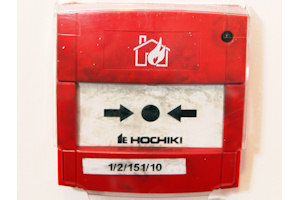Fire evacuation – take responsibility!
21 Aug 2015
The annual evacuation practices will begin on 1 October 2015 - here are some tips to help you prepare

As well as testing procedures, these are a vital part of your health and safety training; to help protect yourself, please ensure that you follow your normal evacuation procedure.
Did you know that on average there are 45 fires each year on campus?
The number one cause of fires on campus is cooking that is left unattended. Such fires have been caused by staff members leaving food too long in microwaves and toasters, resulting in full building evacuations! Other fires that occur in academic buildings have involved various processes involving hot work and the use of flammable materials in labs.
- Keep an eye on what you are heating or cooking.
Did you know that studies have shown that people who survive fires and disasters are more likely to have located and practised using their emergency evacuation routes beforehand?
If you locate and use your emergency routes and assembly points before there is an emergency situation, you are more likely to react quickly during a serious incident and less likely to waste time thinking about where to go and what to do.
- Go and find your nearest emergency evacuation route; it may not be the entrance that you usually use.
Why do people not react to fire alarms?
- Studies have shown that delay in building evacuation is generally due to people waiting for someone else to take the lead and leave the building first.
What should you do?
- Be familiar with the evacuation procedure for your building;
- Know the sound of your fire alarm and the times of any tests;
- Always react to the sound of a fire alarm (if not a test) and do not wait for a Fire Evacuation Marshall to ask you to leave;
- When the alarm sounds, if you are in charge of a group of people, take the lead and leave the building;
- Do not congregate at the building entrances but go to the assembly point(s);
- Wait until you are instructed by Security or a Fire Evacuation Marshall to re-enter the building even if the alarm is not sounding.
Are you prepared?
